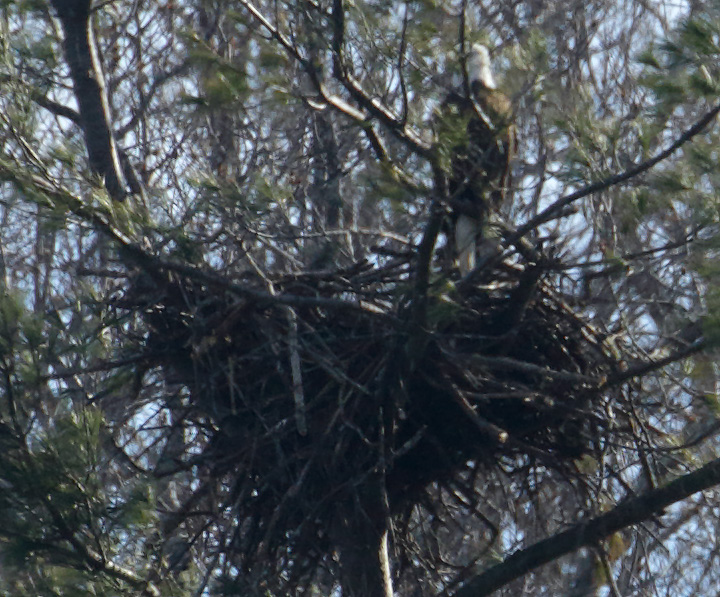
Bald Eagle
First, I want to highlight some nomenclature. For years, I have been calling the large water body where water collects from Lickinghole Creek as a reservoir. This past weekend, I was researching its creation, and found that it was built as a storm water run-off basin. I'm not quite sure what the technical difference is, other than perhaps "reservoir" is a man-made lake built by constructing a dam in order to supply potable water to people, whereas "basin" is used to designate a man-made lake built by constructing a dam in order to prevent flooding, but nevertheless, I shall now refer to that body of water as the Lickinghole Basin.
December 13I've been going to the Lickinghole Basin about once a week to see if the Bald Eagles have returned to their nest, and to try to re-locate the Northern Flicker that had red feathers. It had been suggested that good photos of the head of the Flicker might help determine if the red feathers were dietary induced or if the Flicker was an intergrade with the western subspecies. I hadn't seen the Bald Eagles so far this season, but learned last week that they had returned. I should have realized that a sunny, weekend morning with tempertaures in the 60s would bring out a lot of hikers, children, and dog-walkers. While I expected a few more people this morning, the trail was loaded with non-birders, and I only logged 12 avian species. I did, however, get a quick look at one of the Bald Eagles before it flew away.

Bald Eagle
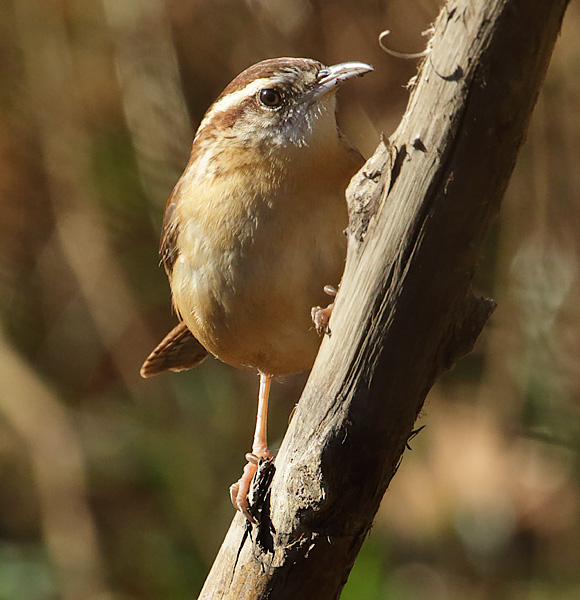
Carolina Wren
We had heavy rain on Monday associated with a cold front that moved into the area. It was in the 20s overnight, and in the 30s when I arrived. I suspected that there wouldn't be a lot of people there this morning, and I encountered only two others all morning. The trail was icy, frost covered, or muddy, depending on how much sunlight had hit a particular area of the trail. I started off going to the basin, and did not see any Bald Eagles. But I did log about 19 avian species at the basin and along the trail to and from the basin.
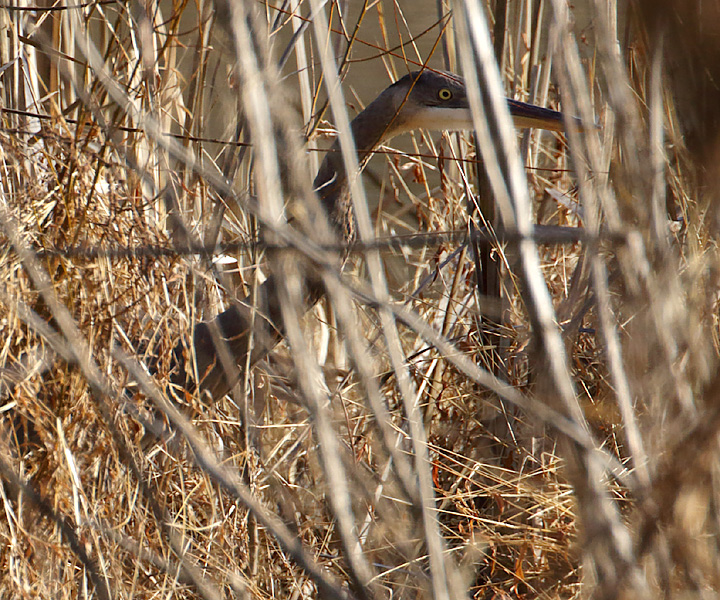
Great Blue Heron
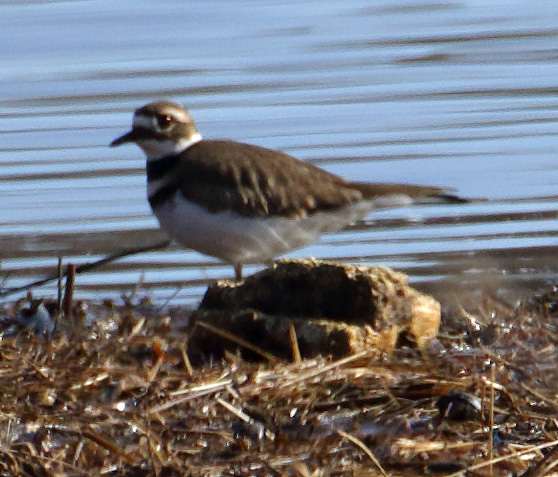
Killdeer
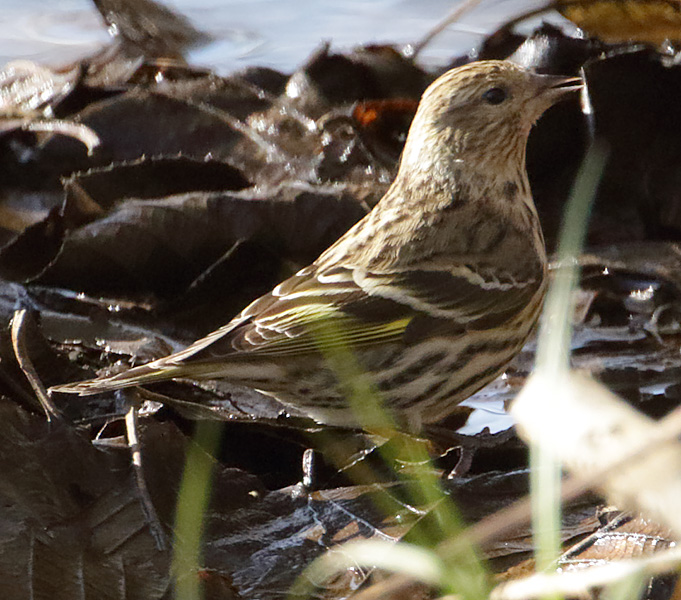
Pine Siskin
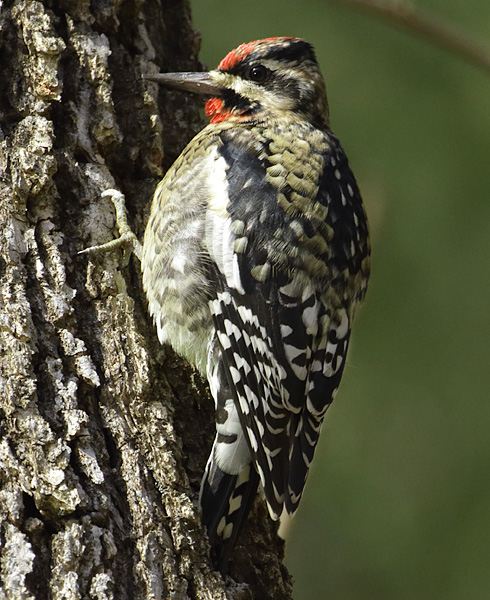
Yellow-bellied Sapsucker
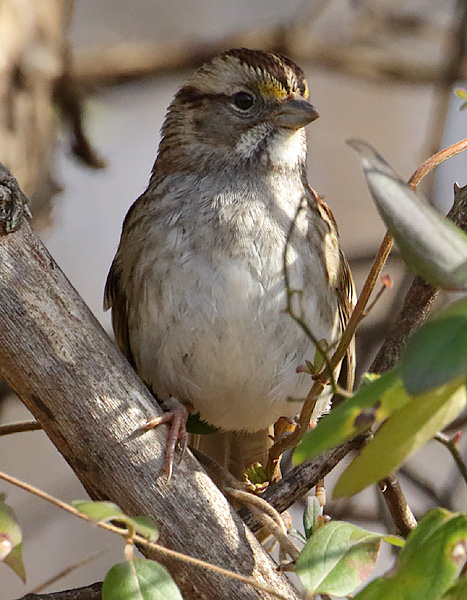
White-throated Sparrow
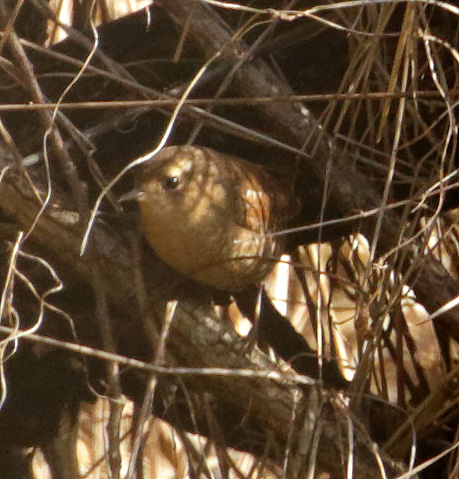
Winter Wren [photo posted here for Dave, my St. Louis birding friend :-)]
I then hiked a bit on the adjacent Crozet Connector Trail. This is where I had seen the Northern Flicker. I soon heard the Keew call of a Northern Flicker, but did not see the bird. A pair of Red-shouldered Hawks flew in and landed in different trees (backlit, of course!). I also heard a Red-tailed Hawk at the same time, but did not see it until I was leaving the Western Ridge subdivision (access to the trail and basin).
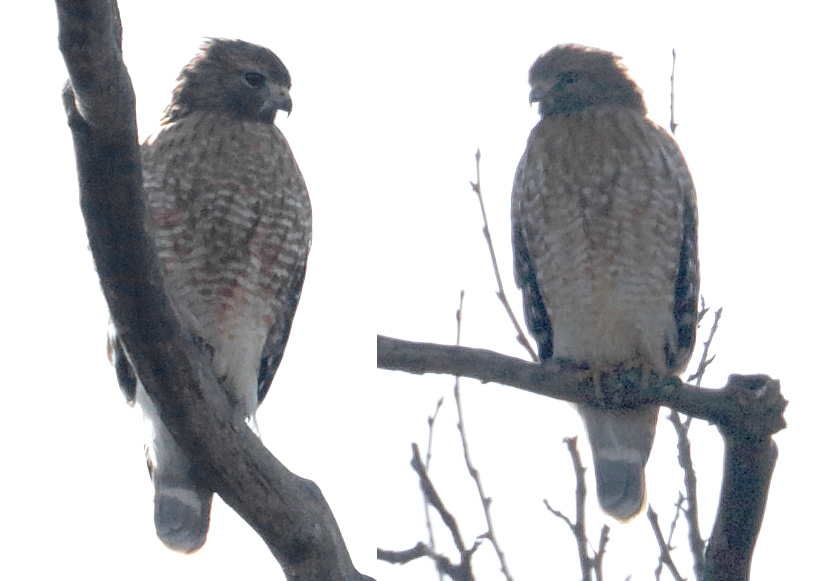
Red-shouldered Hawks
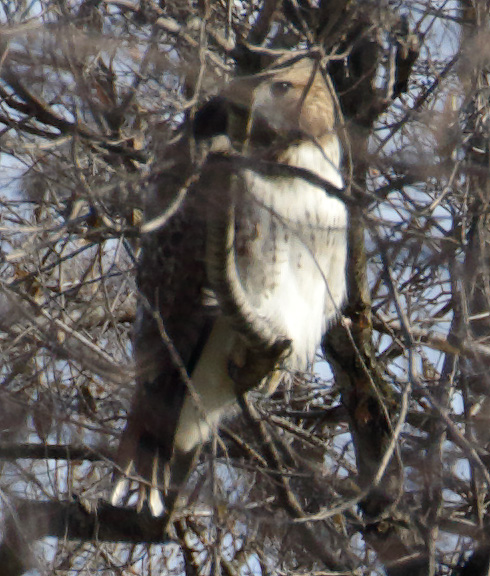
Red-tailed Hawk
As I hiked along this trail, I added some more avian species, and ended up with 33 avian species for the these two trips - 30 species this morning, plus Bald Eagle, Turkey Vulture, and Common Raven that I had seen two days earlier, but not this morning.
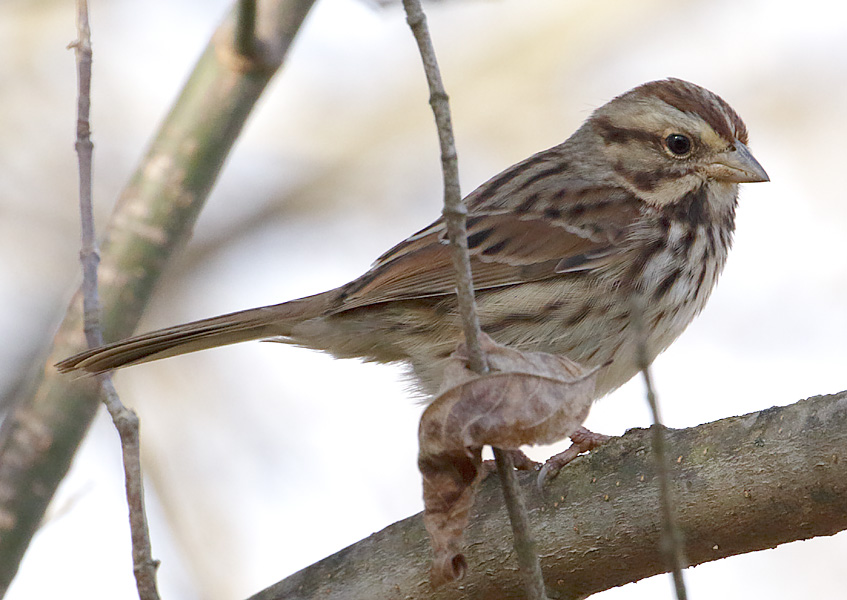
Song Sparrow (also seen at basin)
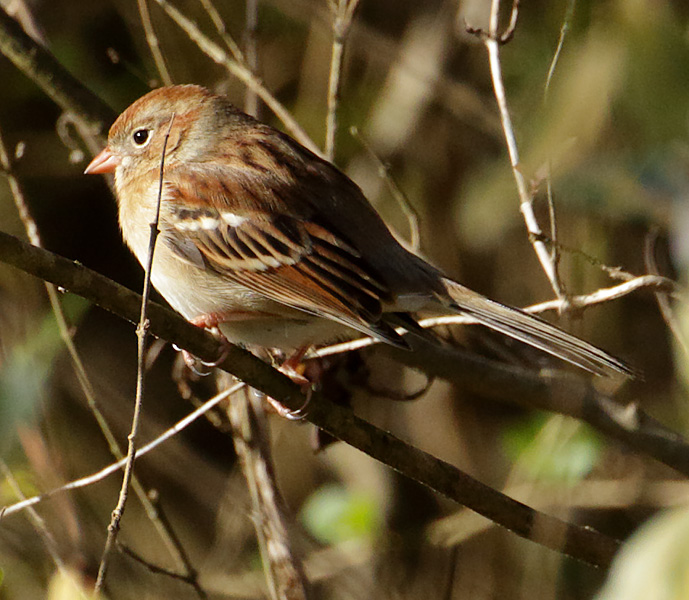
Field Sparrow
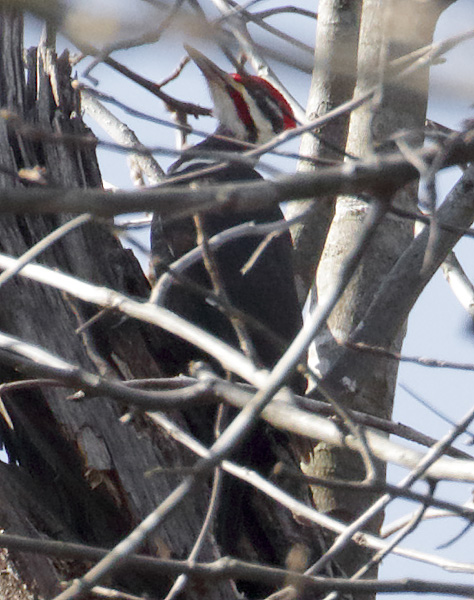
Pileated Woodpecker (also heard at basin)
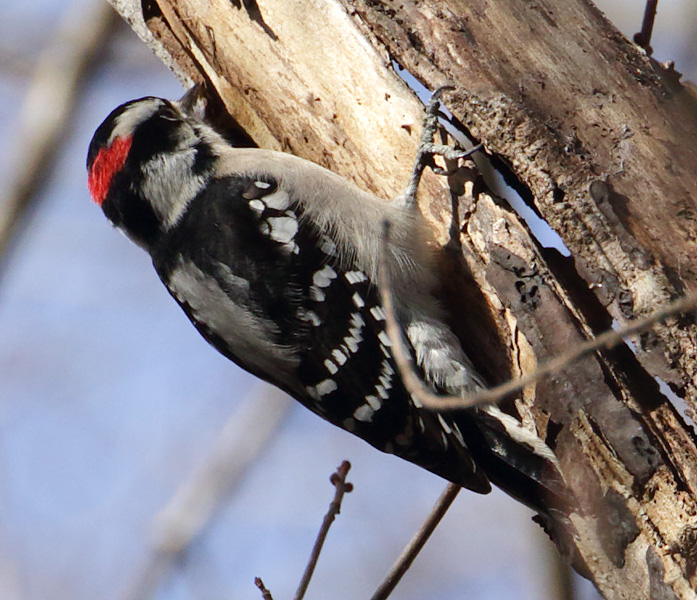
Downy Woodpecker
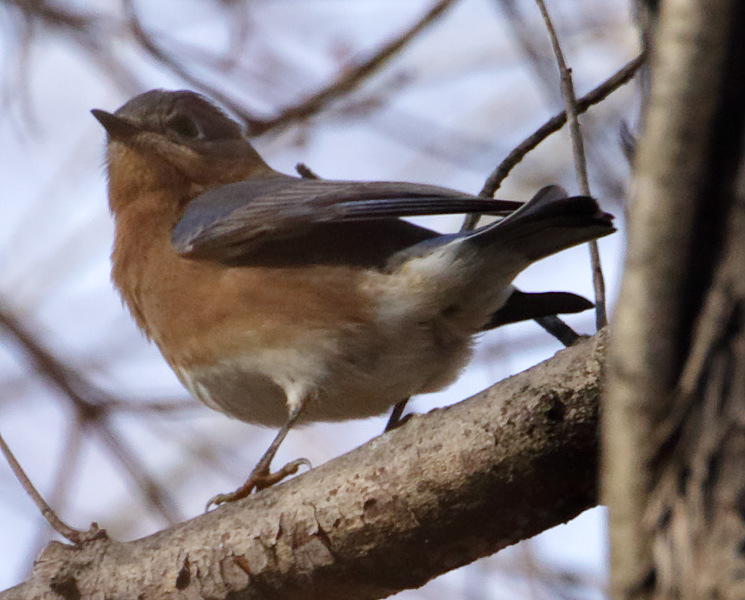
Eastern Bluebird
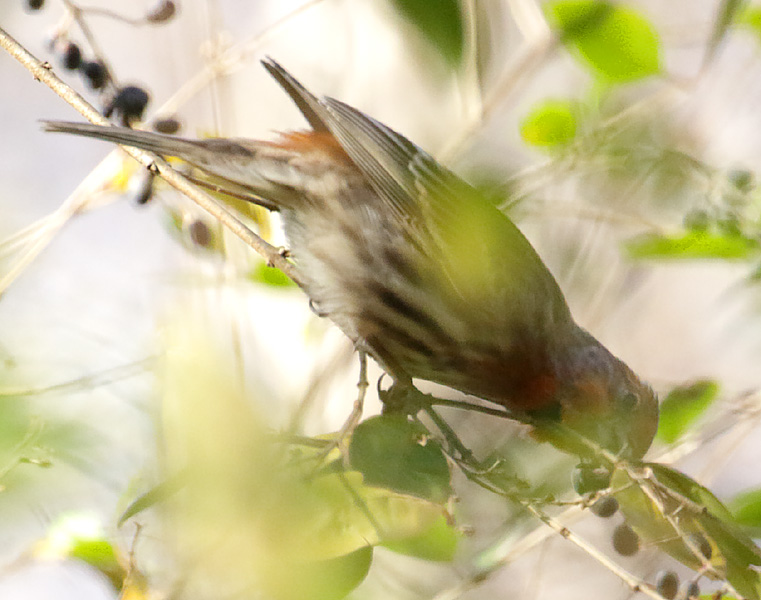
House Finch with orange coloring
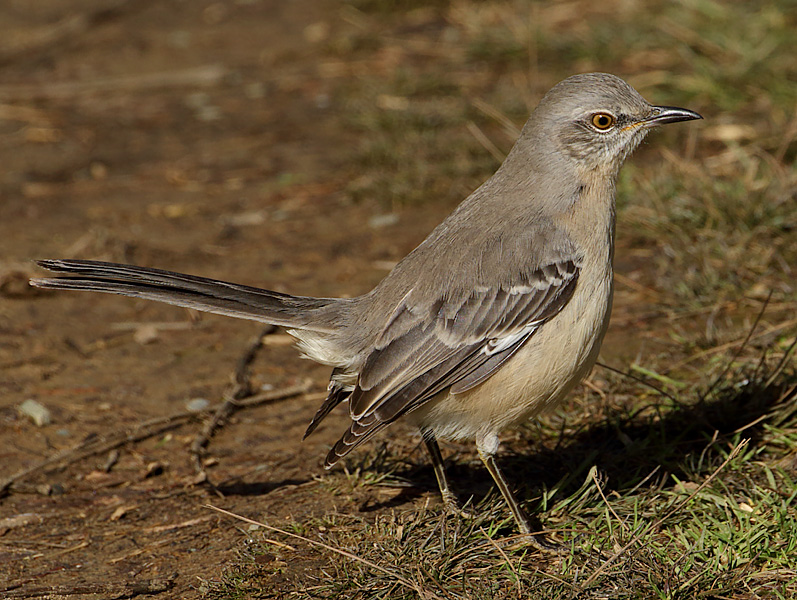
Northern Mockingbird
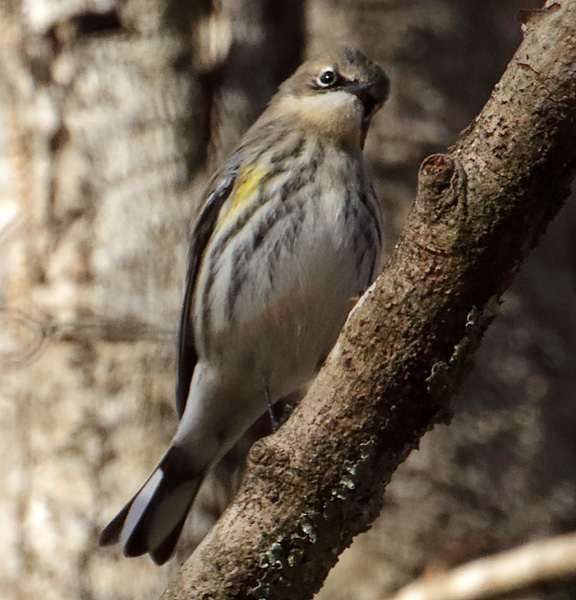
Yellow-rumped Warbler
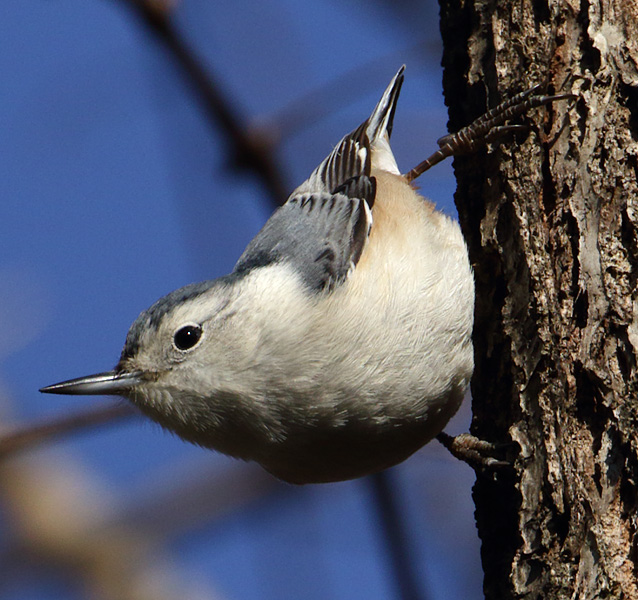
White-breasted Nuthatch
As I was heading back along the trail to head for home, I saw a Flicker perched high on a dead branch, far away from me, and backlit. I got a few photos, and tried to get closer and looking away from the sun, but by the time I got to a better location, the Flicker was gone. So here are a few of the photos that I could get. It was the female, and that was good, as I had seen the flying male a couple of weeks ago, and didn't see any red feathers, so I assumed that it was the female that I wanted to re-locate. Also re-posted here are the two photos I got on November 19 showing the red feathers.
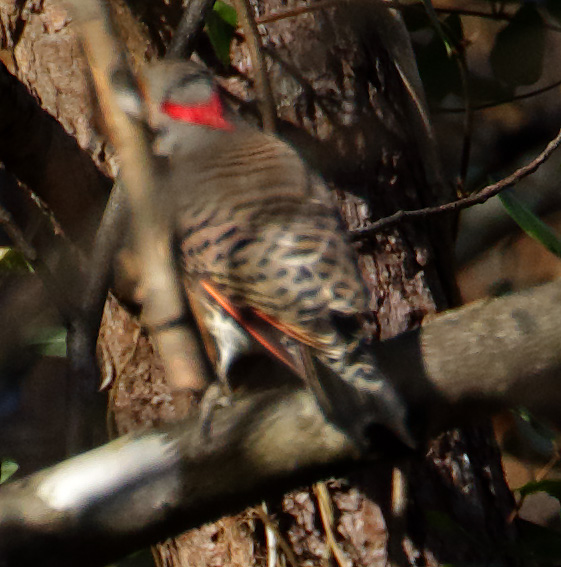
Northern Flicker (11/19/2020)
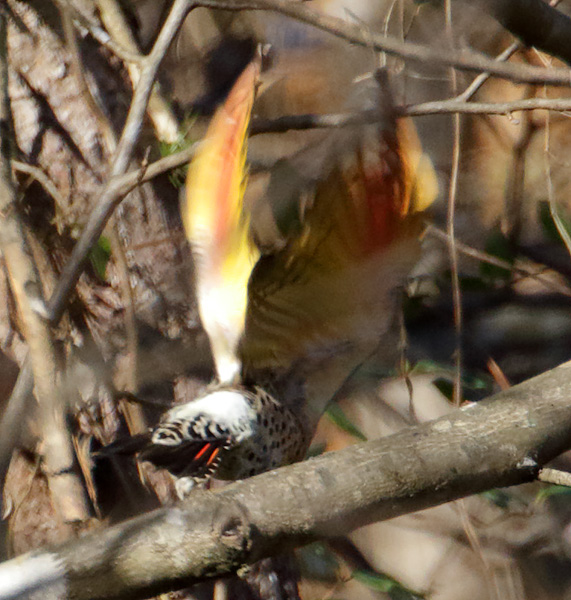
Northern Flicker (11/19/2020)
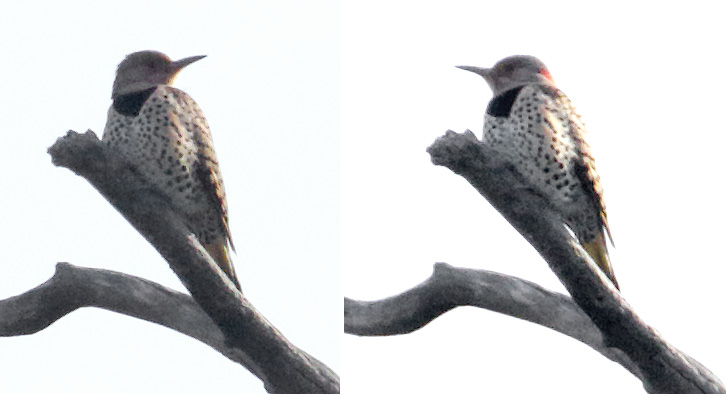
Northern Flicker (12/15/2020)
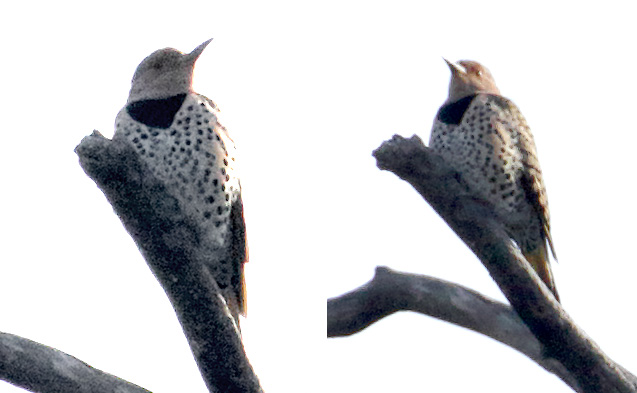
Northern Flicker (12/15/2020)
It appears that there may be some red feathers mixed with yellow feathers in the undertail. Also, take a look at its head and throat. It looks like there is a lighter area just above the dark breast band, the head does look a bit grayish, and perhaps there is a light malar? Compare these photos with drawings of female eastern and western female Flickers from Sibley's guides. The western female has a lighter area just above the dark breast band, and a grayish face with a brownish malar. Both of these features are not present on an eastern female. But, I want to be very cautious here. The photos above of the Flicker are not very good, and I don't want to make any definitive conclusions from these poor photos. This is just an update with what I have found. And I have not found the light area above the dark breast band pictured in other guides. However, Cornell's All About Birds web site shows photos of eastern and western male Northern Flickers, and the light area above the dark breast band (and lack thereof) are clearly seen in their photos (click here to see the Cornell web site). I don't know if both Flicker subspecies can show this feature, or just the western. It seems that the grayish facial features do not go all the way down to the dark breast band, and thus there appears to be a light area above the breast band. I still need to get better photos of this bird!
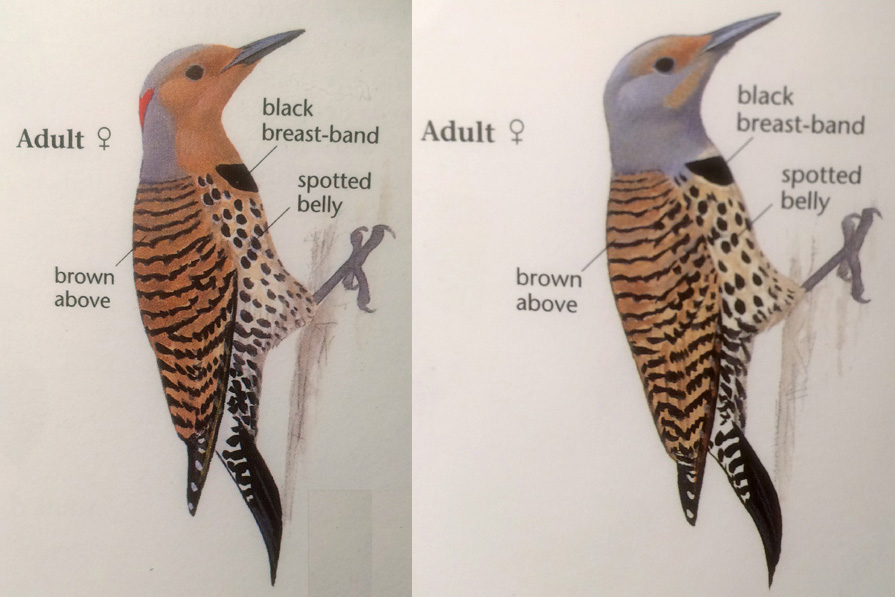
Northern Flicker females; eastern (left); western (right)
Two day list:
Mallard
Great Blue Heron
Black Vulture
Turkey Vulture
Bald Eagle
Red-shouldered Hawk
Red-tailed Hawk
Killdeer
Belted Kingfisher
Red-bellied Woodpecker
Yellow-bellied Sapsucker
Downy Woodpecker
Northern Flicker
Pileated Woodpecker
Blue Jay
American Crow
Common Raven
Carolina Chickadee
Tufted Titmouse
White-breasted Nuthatch
Carolina Wren
Winter Wren
Eastern Bluebird
Northern Mockingbird
Yellow-rumped Warbler
Field Sparrow
Dark-eyed Junco
White-throated Sparrow
Song Sparrow
Northern Cardinal
House Finch
Pine Siskin
American Goldfinch